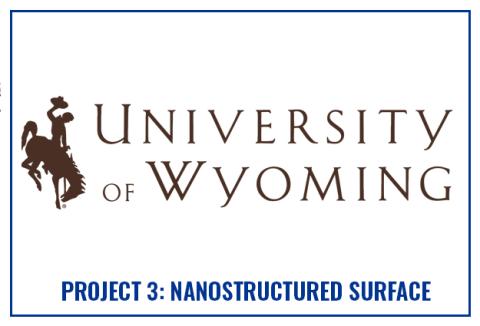
Dr. Caleb Hill
University of Wyoming
Focus
Controlling the influence of surface morphology on the function of surface-immobilized proteins and the functionalization of surfaces with multiple recognition elements for multiplexed sensing.
Major Industry Challenge
Spatial control over the morphology and surface chemistry of heterogeneous interfaces is required to achieve reliable, multiplexed electrochemical sensing. Existing methods for the fabrication of these interfaces cannot achieve of a high degree of control, significantly limiting the development of effective sensing platforms.
Hypothesis
Electrochemical methods can be employed to fabricate arrays of Au nanoparticles (NPs) and selectively modify each nanoparticle with desired chemical recognition elements, yielding highly reproducible electrode surfaces for biosensing applications.
Project Goals
Develop probe-based electrochemical methods for the fabrication of ordered NP arrays and the functionalization of these arrays with chemical recognitional elements. Apply the developed methods to produce functional sensor prototypes.
Major Outcomes
Methods to fabricate nanopatterned surfaces will be developed based on SECCM techniques. Using these methods, we expect that 75 x 75 member arrays of functionalized 50-100 nm NPs spaced 15 µm apart could be fabricated in 1 hour, and the total active sensor dimensions would be 1.2 x 1.2 mm. Once optimized, we anticipate >95 % uniformity in NP electrodeposition and variations in ELP surface coverage to be smaller than 10%.
